Lake Worth Beach Sucks
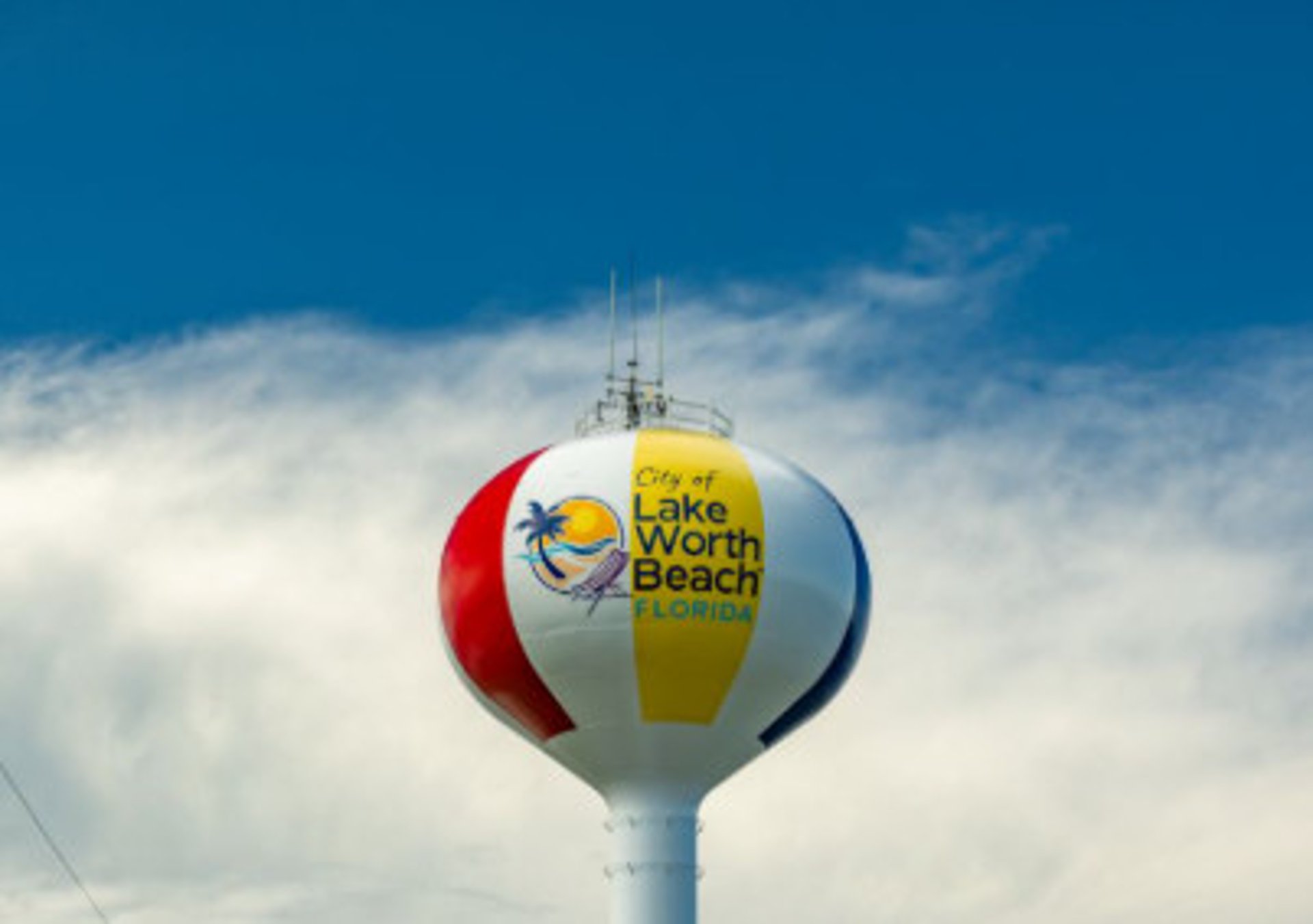
Lake Worth Beach Sucks
Discover the hidden downsides of this little "beach town" called Lake Worth Beach, Florida, and why it might not be for you.
Updated 10/27/2025
Another Shooting in LWB. The streets are not safe!
Shooting occurred in Lake Worth Beach:
Incident: A fatal shooting.
Victim: A woman was found shot and killed.
Location: The incident occurred in the area of South Dixie Highway in Lake Worth Beach.
Date: The incident was reported late on Saturday night, November 2, 2025.
Status: The Palm Beach County Sheriff's Office (PBSO) is investigating the incident.
Suspect: The suspect is reported to be at large.
Investigation: Detectives are actively searching for the suspect and investigating the circumstances surrounding the shooting.
Are the streets of Lake Worth Beach safer today?
A major law enforcement crackdown dubbed Operation Unplugged.
Federal agents, in coordination with the Palm Beach County Sheriff’s Office (PBSO), delivered a significant blow to the local drug trade, targeting the notorious “G-Block” area—specifically around the intersection of 9th Avenue and South G Street. The operation, which culminated in a wave of arrests on or around October 24, 2025, has effectively dismantled a key distribution hub for deadly narcotics in the city.
Fentanyl Dealers Taken Off the Street
The primary focus of Operation Unplugged was the illegal distribution of fentanyl, the powerful synthetic opioid driving the current overdose crisis. This investigation was a testament to the perseverance of law enforcement, who worked tirelessly to track, identify, and arrest individuals responsible for poisoning our community.
The success of moving individuals from "G-Block to Jail Block" highlights the effective partnership between local and federal authorities in combatting large-scale drug trafficking. These busts are critical for not only seizing the dangerous narcotics but also for disrupting the networks that profit from addiction and despair.
A Victory for the Community
For too long, neighborhoods like the one surrounding 9th Avenue and South G Street have suffered the consequences of open-air drug markets. The presence of fentanyl and other dangerous substances not only fuels crime but also endangers every resident, especially our youth.
Operation Unplugged is more than just a police action; it is a vital step in reclaiming our public spaces and restoring peace of mind to the families who live there. By removing these alleged fentanyl dealers, the City of Lake Worth Beach takes a powerful stand against the drug epidemic.
While the fight against illegal drugs is ongoing, these decisive actions send a clear message: those who profit from the devastation of our community will be held accountable. We commend the dedication of every officer and agent involved in making Lake Worth Beach a safer place.
Guarding the Homefront: Why "No Trespassing" Signs Are a Fixture in Lake Worth Beach
Driving through certain neighborhoods in Lake Worth Beach, you might notice a recurring theme: "No Trespassing" signs adorning homes, fences, and gates. While these signs are a common sight in many private communities, their apparent prevalence here speaks to a deeper concern – the ever-present challenge of property crime and the proactive steps residents are taking to protect their peace of mind and their investments.
It's no secret that some areas, even within our beautiful coastal towns, face a tougher battle against property crime. Lake Worth Beach, like any vibrant community, has its share of challenges, and unfortunately, property-related offenses can be a significant concern for homeowners and landlords alike. From the opportunistic thief looking for an easy score to more organized attempts at vandalism or even squatting, these issues can erode a sense of security and create considerable financial and emotional distress.
So, why the abundance of these stern warnings? It largely boils down to a strategic defense against these threats, bolstered by Florida's legal framework.
The Law on Your Side (When You're Prepared)
In Florida, a "No Trespassing" sign isn't just a suggestion; it's a critical legal tool. By prominently displaying such signage, property owners provide clear and unequivocal notice that entry onto their land is forbidden. This simple act significantly strengthens their position should they need to involve law enforcement. Without clear signage, proving that an individual was trespassing can sometimes be more challenging.
But many Lake Worth Beach residents and property managers take it a step further. They often file a trespass authorization letter with local law enforcement agencies, such as the Palm Beach County Sheriff's Office. This crucial document empowers deputies to act swiftly. If a property with a trespass authorization on file is found with unauthorized individuals present, officers can remove them and, if necessary, make an arrest without the property owner needing to be physically present. This is particularly invaluable for absentee owners, rental property managers, or residents who might be away on vacation.
Deterrence and Defense: More Than Just a Warning
Beyond the legal leverage, these signs serve as a powerful deterrent. A clearly marked property sends a message: "This property is protected, and its owner is serious about enforcement." For those looking to commit a crime, the visual cue of a "No Trespassing" sign suggests a higher risk of being caught and facing legal consequences, potentially prompting them to look elsewhere.
Consider the vulnerabilities:
Vacant Homes: Whether awaiting sale, renovation, or simply between tenants, vacant properties are prime targets for break-ins, copper pipe theft, and even squatters who can be notoriously difficult to remove.
Rental Properties: Landlords often manage multiple properties and cannot be on-site constantly. Signs and trespass authorizations provide an essential layer of protection for their investments and the safety of the neighborhood.
Seasonal Residents: Many who enjoy Lake Worth Beach's charm are seasonal residents. Their homes, left empty for months, become targets, making proactive security measures paramount.
Building a Secure Community
The proliferation of "No Trespassing" signs in Lake Worth Beach isn't a sign of unfriendliness; it's a testament to residents and property owners actively engaging in their own security. It reflects a community that understands the challenges of property crime and utilizes available legal tools to safeguard their homes and neighborhoods.
While it's a stark reminder of ongoing security concerns, it also highlights the resilience and proactive spirit of Lake Worth Beach residents who are committed to maintaining safe and secure environments for everyone. It's a clear message to potential wrongdoers: this home, this property, this community, is guarded.
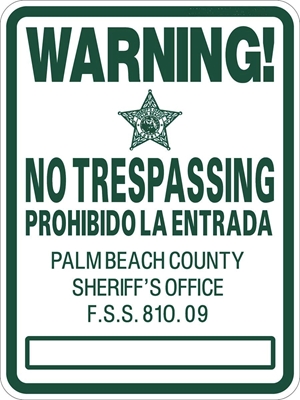

TRAGEDY STRIKES: Two Dead in Early Morning Lake Worth Beach Homicide
Lake Worth Beach woke up yesterday, October 15, 2025, to the heartbreaking news of an early morning double homicide. While details from the Palm Beach County Sheriff’s Office (PBSO) remain limited as the investigation unfolds, the community is left reeling from the violent incident that claimed the lives of two individuals.
The Developing Investigation
What we know at this time is that the incident occurred in the early hours of Wednesday morning in the Lake Worth Beach area, resulting in the fatal shooting of two people. Homicide detectives with the PBSO quickly secured the scene and are actively working to piece together the events that led to the deaths.
Authorities have not yet released the identities of the victims, pending notification of their families. They have also not provided details on a possible suspect or motive, though they stress that all resources are being utilized to track down the person or persons responsible for this horrific act.
A Pattern of Escalating Gun Violence
This latest shooting is part of a concerning pattern for Lake Worth Beach, where gunfire has erupted repeatedly this year.
August 2025: A deputy-involved shooting occurred near South J Street and 7th Avenue South after an armed suspect allegedly opened fire on law enforcement.
September 2025: A 17-year-old was arrested for a drive-by shooting along South C Street, just blocks from the latest homicide.
June 2025: Gunfire broke out at a baby shower on South F Street, injuring multiple guests.
All of these incidents occurred within roughly a one-mile radius, a tight cluster of violence that underscores growing public safety concerns in the heart of Lake Worth Beach. Local residents say they’ve grown weary of police lights flashing across their windows week after week.
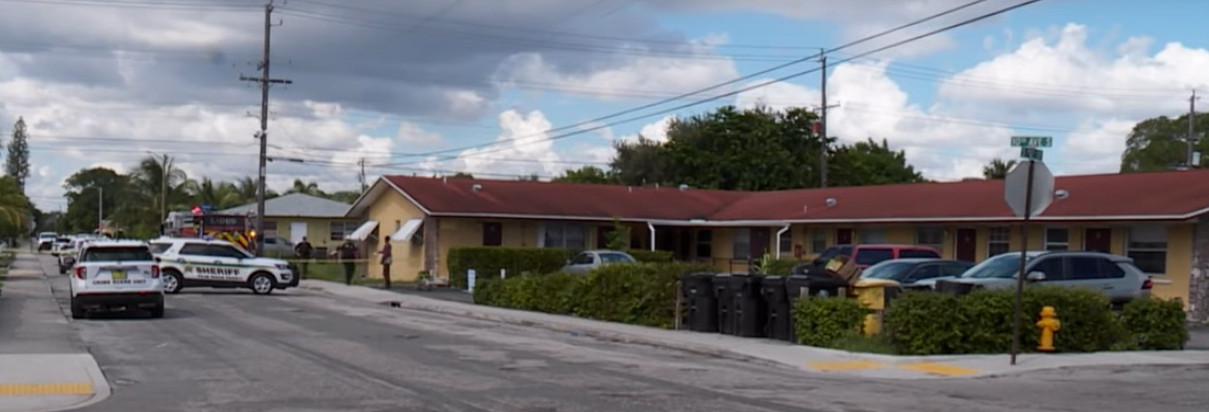

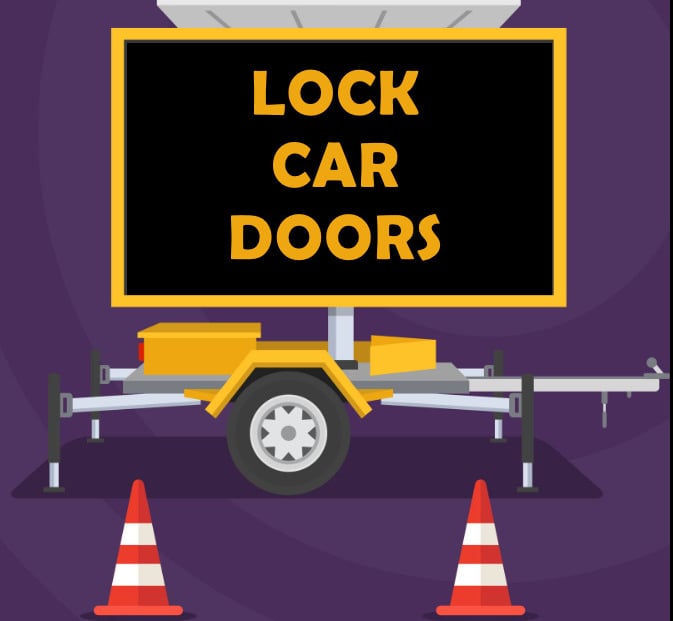

What a nice first impression of Lake Worth Beach as you exit 6th Ave going east.
Flashing Lights Saying "Lock Car Doors": What That I-95 Exit Sign Really Means
You've just exited I-95, perhaps heading towards the vibrant downtown or the beautiful beaches, and there it is: a flashing electronic sign. Not a traffic advisory, but a stark message: "LOCK YOUR CAR DOORS. HIDE YOUR VALUABLES."
For many, this isn't just a suggestion; it's a jolt. It immediately sparks questions about the safety of the area you've just entered. So, what does a sign like that truly signify, and how should you interpret it?
A Direct Acknowledgment of Risk
First and foremost, such a sign is a direct and unambiguous acknowledgment by local authorities of a recurring problem. It's not subtle. It's not a general safety reminder you'd see anywhere. When a community invests in electronic signage to deliver such a pointed message at a major entry point, it means:
Vehicle Break-ins and Thefts are a Known Issue: This isn't theoretical. The police department or local government has identified a pattern of vehicle burglaries, property theft from cars, and potentially even carjackings in the vicinity.
Opportunity Crime is Prevalent: These crimes are often opportunistic. Thieves look for unlocked doors, visible purses, phones, laptops, or even loose change. The sign is a proactive attempt to eliminate that "easy target" opportunity.
Specific Hotspots May Exist: While the sign is at an exit, the problem areas might be in nearby shopping centers, parking lots, residential streets, or even at traffic lights where quick "smash-and-grabs" are possible.
What You Should Do Immediately
Upon seeing such a sign, your immediate reaction should be:
ACT on the Advice: Don't dismiss it. Lock your doors now. Check that all passengers have their doors locked.
Hide Everything: If you have bags, electronics, or anything of value, put them in your trunk or under a seat. Out of sight, out of mind is the goal.
Stay Alert: Increase your situational awareness. Pay attention to your surroundings, especially in parking lots, at gas stations, or while stopped in traffic.
Beyond the Car Doors: Broader Implications
While the sign specifically mentions car doors and valuables, it's a strong indicator that general personal safety awareness should be heightened. This doesn't mean you should live in fear, but rather be intelligently cautious.
Consider Personal Belongings: If you're walking around, keep your purse close, wallet in a front pocket, and avoid flashing expensive items.
Nighttime Awareness: Be extra vigilant at night. Park in well-lit areas.
Trust Your Gut: If a situation feels off, remove yourself from it.
Is the Area "Unsafe"?
This is where nuance comes in. A sign like this doesn't necessarily mean the entire area is a war zone or that violent crime is rampant. It's very often a targeted response to property crime. However, property crime can sometimes escalate or be a precursor to more serious incidents.
It means: This is an area where you need to be actively proactive about securing your belongings and being aware of your environment. It's a reminder that criminals are operating, and they're looking for easy targets.
So, the next time you see that flashing sign after getting off I-95, don't just see words. See it as a helpful, albeit blunt, warning. Take heed, secure your vehicle, and stay vigilant. It's a simple, free piece of advice that could save you a significant headache.
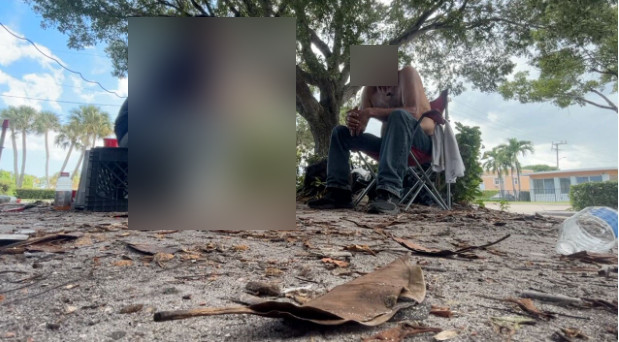

The Hidden Pathways: Confronting the Challenges in Lake Worth Beach's Alleys
Lake Worth Beach has a charm that's hard to deny. Our streets are lined with colorful murals, historic buildings, and eclectic shops. The energy of downtown, the proximity to the ocean, and the vibrant arts scene are what draw people here and make us proud to call it home. But for every bright, sunlit avenue, there is a shadowed space just out of view. We need to talk about our alleys.
For many residents and business owners, the alleys of Lake Worth Beach are not just service corridors for trash pickup and deliveries. They have become hotspots for illicit and dangerous activities that affect our community's quality of life and safety. To ignore this is to ignore the well-being of our neighbors and the health of our city.
The Unseen Reality
Step off of Lake or Lucerne Avenue, and the picture can change dramatically. These hidden pathways, often poorly lit and shielded from public view, have become magnets for problems that thrive in the shadows.
Drug Use: The most immediate and dangerous issue is prevalent drug use. It is not uncommon for residents and employees to find discarded needles, baggies, and other paraphernalia behind their homes and businesses. This is not only a sanitation crisis but a serious public health and safety risk. The human tragedy of addiction is playing out in our backyards, leaving a trail of potential danger for anyone who happens to stumble upon it, including children.
Prostitution: Our alleys have also become known locations for prostitution. This activity brings with it a host of associated risks, including the potential for violence, human trafficking, and other criminal enterprises. It creates an environment of fear and degrades the safety of our neighborhoods, making residents feel insecure in the spaces immediately surrounding their own homes.
Public Drinking and Loitering: While perhaps seen as a lesser offense, chronic public drinking and loitering contribute significantly to the decline of these spaces. The constant presence of intoxicated individuals can be intimidating and often leads to noise disturbances, litter, and public urination. This creates a no-go zone for many residents and makes it difficult for businesses to maintain a clean and welcoming environment for their customers and staff.
The Ripple Effect on the Community
These aren't isolated problems. They create a ripple effect that touches everyone.
For business owners, it means starting the day by cleaning up human waste or drug paraphernalia before they can even open their doors. It means worrying about the safety of their employees who have to take out the trash after dark.
For residents, it means being unable to use the rear entrance to their own property without fear. It means telling their children not to play in the backyard, and a constant sense of unease that degrades the peaceful enjoyment of their homes. On top of this, residents are often the ones left responsible for cleaning up the dangerous aftermath—discarded needles, broken glass, and other hazardous waste. To add insult to injury, after being forced to handle these dangerous materials, a homeowner can then face fines from code compliance for the very mess left by others. This creates a frustrating cycle where residents are penalized for the city's broader inability to stop the actual problem.
This reality stands in stark contrast to the beautiful, artistic image our city works so hard to project.
What Can Be Done? A Call for a Community-Wide Response
Pointing fingers is easy, but finding solutions requires a collective effort. This is not an issue that can be solved by one group alone; it requires a coordinated response from law enforcement, city officials, social services, and the community itself.
Improve Visibility and Lighting: Crime thrives in darkness. A city-wide initiative to install brighter, more effective lighting in alleys is a critical first step. Clearing overgrown vegetation and removing objects that create hiding spots can also make a significant difference. This is a core principle of Crime Prevention Through Environmental Design (CPTED).
Increase Presence and Patrols: A more visible and consistent presence from law enforcement in these specific areas is essential. This doesn't just mean reactive calls, but proactive, regular patrols that can deter illicit activity before it starts.
Community and Social Outreach: We must acknowledge that these issues are often symptoms of deeper problems like addiction, mental illness, and homelessness. Arresting our way out of this problem is not a sustainable solution. The city and local non-profits need to work together on targeted outreach programs that can connect individuals in these alleys with the resources they need, from addiction treatment to housing assistance.
Resident and Business Involvement: We, the community, have a role to play. We must be diligent about reporting illegal activity. Forming neighborhood watch groups and maintaining open lines of communication with the Palm Beach County Sheriff's Office can empower us to take back our spaces.
Lake Worth Beach is our home. Its beauty is worth fighting for, and its problems are our shared responsibility. By bringing these hidden issues out of the alleys and into the light of public conversation, we can begin to work together to build a safer, cleaner, and healthier community for everyone.
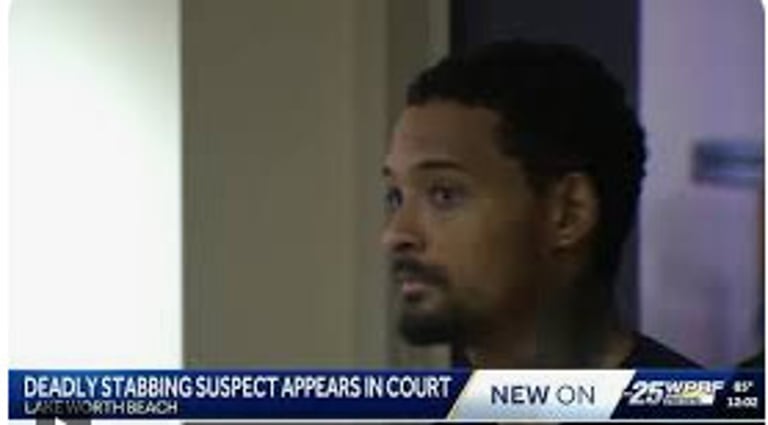
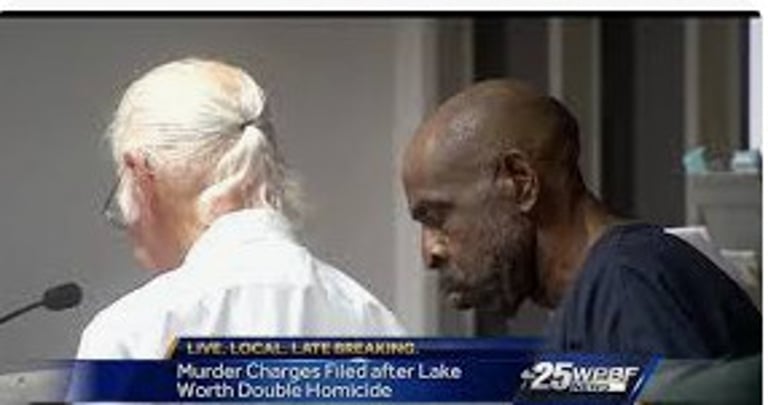

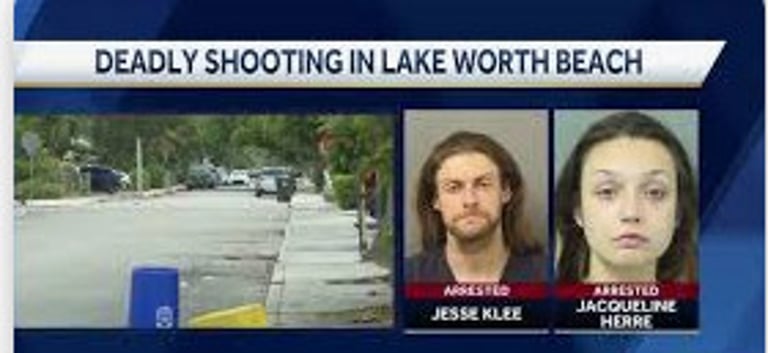
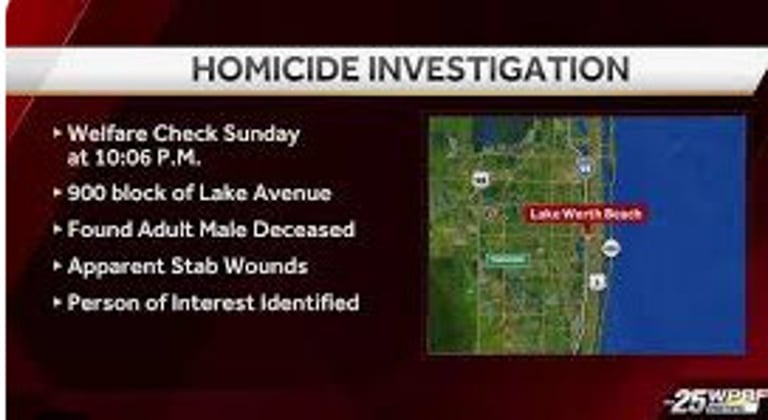

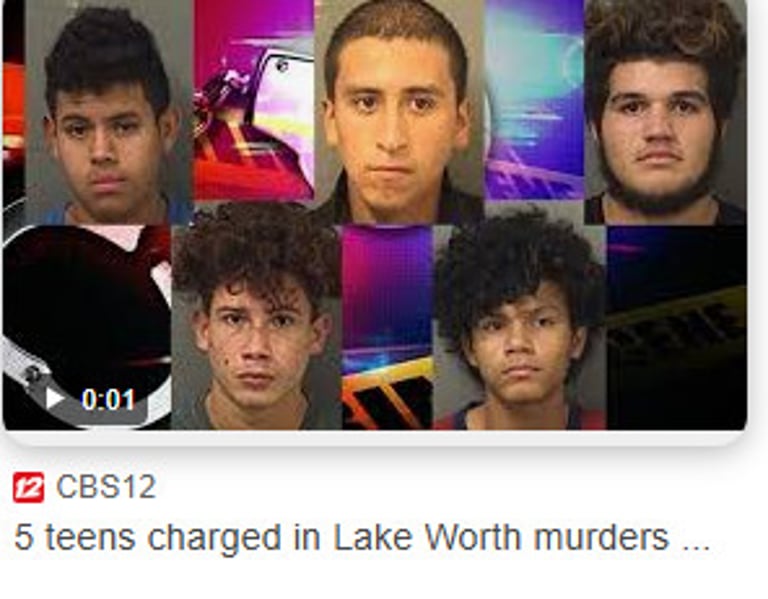









Most Recent Annual Crime Statistics (2023)
Based on data submitted by the Palm Beach County Sheriff's Office to the FBI, the following crime figures were reported for Lake Worth Beach for the full year of 2023:
Total Crimes: Approximately 1,530 incidents
Violent Crimes: 378 incidents
Property Crimes: 1,160 incidents
Understanding the Numbers:
Violent crimes include offenses such as homicide, rape, robbery, and aggravated assault.
Property crimes include burglary, larceny (theft), and motor vehicle theft.
When compared to its population of approximately 40,000 residents, these figures indicate a crime rate that is higher than the national average. It's important to note that crime rates can fluctuate year to year based on a wide variety of factors.




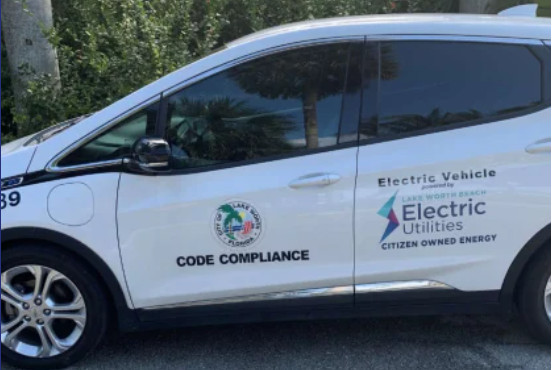

Common Criticisms of Lake Worth Beach
Code Enforcemen
Allegations of Inconsistent and Selective Enforcement: A frequent complaint among residents is the perception that code enforcement is not applied uniformly throughout the city. Some property owners have voiced feelings of being unfairly targeted for minor infractions, while other more significant violations in different areas appear to be overlooked. This leads to accusations of favoritism or neglect depending on the neighborhood or property in question.
Aggressive and Punitive Approach: Some residents and business owners have described their interactions with code enforcement as overly aggressive and punitive rather than corrective. The focus, at times, seems to be on levying fines and liens quickly, rather than working with property owners to achieve compliance. This has led to situations where residents, particularly the elderly or those with limited financial resources, face substantial financial penalties for issues they are struggling to address.
Fines and Liens Escalating to Foreclosure: One of the most severe criticisms involves the city's process of levying daily fines for code violations. These fines can accumulate rapidly, leading to large liens being placed on properties. In past years, Lake Worth Beach has faced public scrutiny and legal challenges over its practice of foreclosing on properties due to unpaid code enforcement liens, a practice critics argue is excessively harsh, especially when the original violation was minor.
Poor Communication and Lack of Clarity: Residents have reported difficulties in getting clear and consistent information from the code enforcement department. This can include a lack of clarity on what is needed to resolve a violation, unreturned phone calls, or conflicting information from different officers. This communication gap can exacerbate the frustration and financial burden on property owners trying to come into compliance.
Impact on Small Businesses and Property Owners: Small business owners and landlords have sometimes found the code enforcement process to be a significant bureaucratic and financial hurdle. Issues with signage, property maintenance, or zoning can lead to costly citations that strain their operational budgets. The perception is that the system can be inflexible and does not adequately consider the challenges faced by small-scale entrepreneurs.
Use as a Tool in Neighbor Disputes: There is a sentiment that the code enforcement system is sometimes used by residents to harass their neighbors. Anonymous or repeated complaints can trigger inspections and citations that may stem more from personal animosity than a genuine concern for public welfare, putting the department in the middle of neighborhood conflicts.
These points are a summary of criticisms found in public records, local news coverage, and community discussions. The City of Lake Worth Beach and its Code Enforcement department have, at various times, stated their goals are to ensure public safety and maintain community standards for the benefit of all residents.
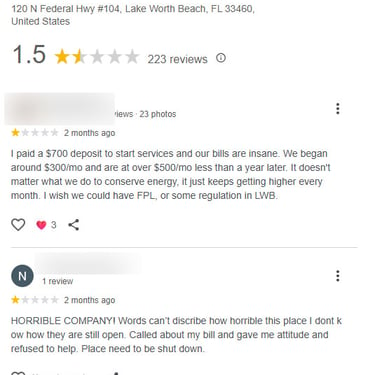
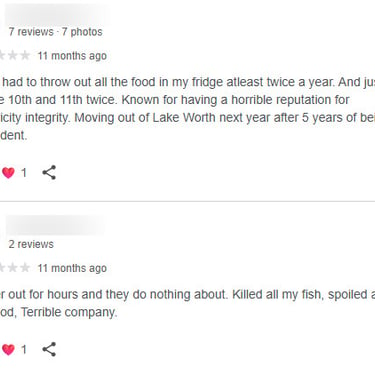
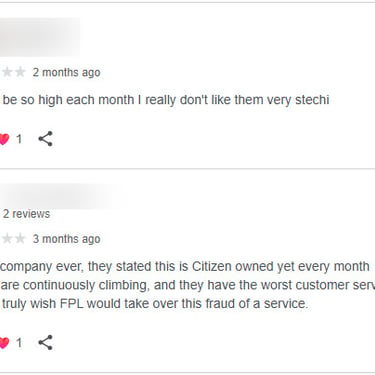

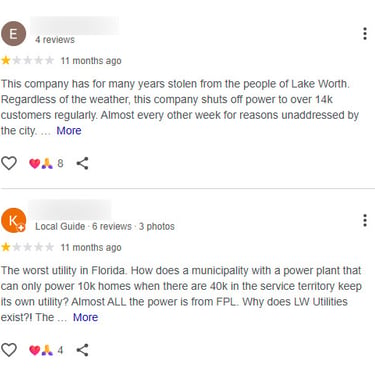
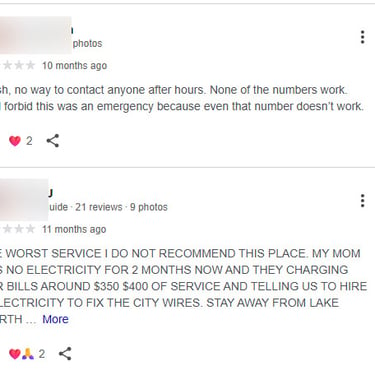
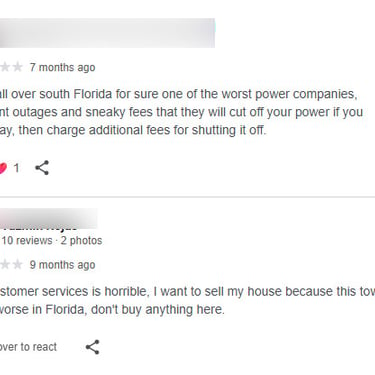
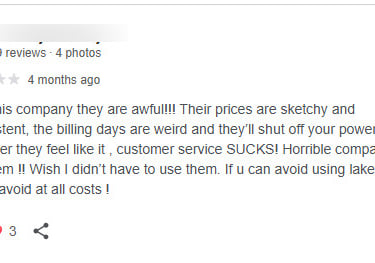

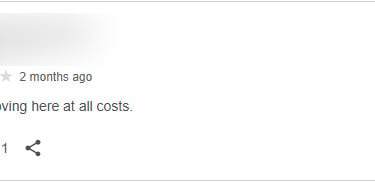

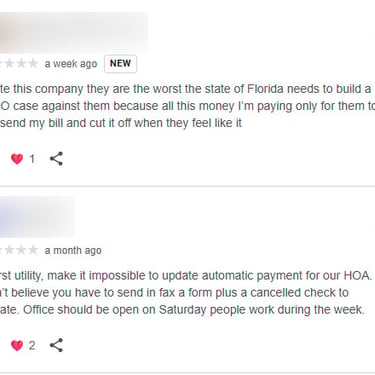
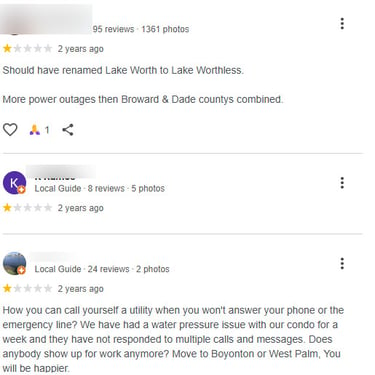
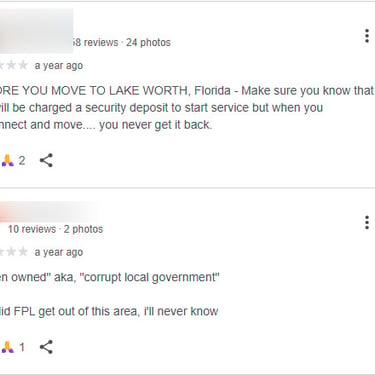
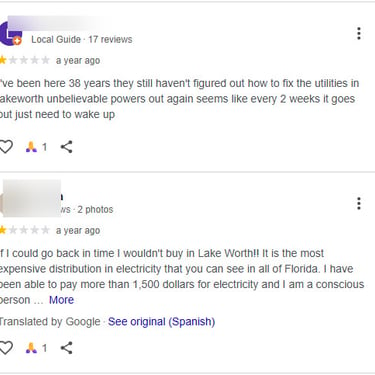
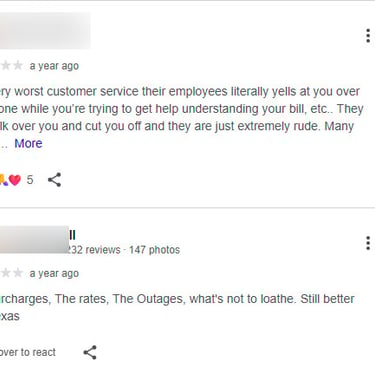
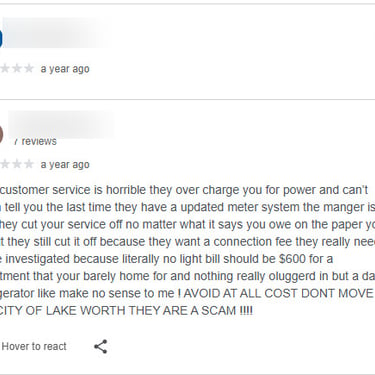
Lake Worth Beach Utilities
Based on public information, customer feedback, and news reports, Lake Worth Beach Utilities faces several distinct challenges. These issues range from aging infrastructure and financial concerns to customer service and the operational complexities of running a municipal-owned utility system.
Here are some of the key problems associated with Lake Worth Beach Utilities:
1. Aging Infrastructure and Reliability Issues
A primary concern is the age of the city's utility infrastructure, particularly for its electrical and water systems. This can lead to several problems:
Power Outages: The electric utility has been criticized for the frequency and duration of power outages. While some outages are unavoidable due to storms, others are attributed to failing equipment like older transformers and power lines.
Water Main Breaks: The water distribution system is also prone to breaks due to old pipes, causing service interruptions, boil water notices, and costly emergency repairs.
Need for Costly Upgrades: Modernizing the electric grid and water and sewer systems requires massive capital investment, a significant financial challenge for the city.
2. High Utility Rates and Fees
Customers frequently complain about the high cost of their utility bills.
Rate Comparisons: When compared to larger, investor-owned utilities like Florida Power & Light (FPL), Lake Worth Beach's electric rates are often higher. This is partly due to a lack of economy of scale and the costs associated with maintaining its own power generation and distribution systems.
Franchise and Surcharge Fees: Utility bills in Lake Worth Beach include various surcharges and fees that contribute to the city's general fund. While this is a common practice for municipal utilities, residents often criticize it as an additional tax that inflates their bills.
3. Financial and Management Concerns
The utility's financial health and management have been subjects of public debate.
Debt Service: The utility carries debt from past infrastructure projects, and the payments on these bonds are a significant operational expense that influences customer rates.
Enterprise Fund Transfers: The practice of transferring millions of dollars from the utility's revenue to the city's general fund is a major point of contention. Critics argue this money should be reinvested into infrastructure upgrades to improve reliability and potentially lower rates, while city officials defend it as a necessary revenue source to pay for essential city services like police and parks.
4. Customer Service and Billing Issues
Residents have reported frustrating experiences with the utility's customer service and billing departments.
Billing Errors: Complaints about inaccurate meter readings or unexpected charges on bills are a common issue.
Communication Problems: Customers have expressed frustration over a lack of proactive communication regarding planned service interruptions, the status of outages, or the reasons behind rate changes.
Difficulty Resolving Disputes: Some users find the process for disputing a bill or resolving a service issue to be bureaucratic and slow.
5. Storm Preparedness and Response
While all Florida utilities face hurricane risks, municipal utilities like Lake Worth Beach's have smaller crews and fewer resources for storm restoration compared to statewide providers. This can sometimes lead to longer recovery times after a major storm hits the area.


Are PBSO Resources in Lake Worth Beach Diverted to ICE Operations?
Lake Worth Beach, FL – For residents of Lake Worth Beach, the presence of law enforcement is a constant, yet a growing number of community members and advocates are questioning the primary focus of the Palm Beach County Sheriff's Office (PBSO) in their city. While local crime remains a concern, anecdotal evidence and community reports suggest that a significant portion of PBSO's efforts in Lake Worth Beach may be increasingly dedicated not to traditional crime fighting, but to assisting federal immigration enforcement operations conducted by U.S. Immigration and Customs Enforcement (ICE).
The relationship between local law enforcement and federal immigration agencies has long been a contentious issue across the country, and Lake Worth Beach appears to be a microcosm of this national debate. The PBSO, responsible for policing Lake Worth Beach, has an established history of working with ICE. This collaboration intensified following a 2019 state law that mandated local law enforcement agencies cooperate with federal immigration authorities.
Eyewitness accounts from residents frequently describe ICE vehicles patrolling the streets of Lake Worth Beach, often in conjunction with PBSO deputies. These joint operations reportedly lead to arrests, raising concerns about racial profiling and the impact on the city's diverse immigrant population.
Critics argue that this emphasis on immigration enforcement diverts valuable PBSO resources—personnel, time, and budget—away from addressing local criminal activities, traffic violations, and community policing initiatives that directly enhance public safety for all residents. "When deputies are focused on assisting ICE with immigration arrests, that's time they're not spending on investigating burglaries, responding to domestic disputes, or engaging with the community to prevent crime," stated a local advocate who wished to remain anonymous due to fear of reprisal. "It feels like our local police are being used as a tool for federal immigration policy, rather than serving the immediate needs of our city."
The implications for Lake Worth Beach are multifaceted. For immigrant communities, particularly those who are undocumented or have mixed-status families, the increased ICE presence, facilitated by PBSO, fosters an environment of fear and distrust. This fear can deter individuals from reporting crimes, cooperating with law enforcement as witnesses, or seeking help when they are victims themselves, out of apprehension that any interaction with police could lead to immigration consequences.
City officials in Lake Worth Beach have acknowledged these community concerns. A city commissioner, speaking on the issue, noted that while they are aware of the anxieties surrounding ICE activity, the city has "little control over federal immigration enforcement." However, this stance does little to assuage the worries of residents who feel that their local law enforcement agency, the PBSO, has a choice in how it prioritizes its efforts within the city limits.
While the PBSO maintains that its collaboration with ICE is in compliance with state and federal mandates, and is part of a broader effort to ensure public safety, the perception on the ground in Lake Worth Beach tells a different story. Many residents are left wondering: Is the PBSO's primary mission in Lake Worth Beach truly to combat local crime, or has it become an extension of federal immigration enforcement, potentially at the expense of addressing the everyday safety and security needs of its diverse population? The debate continues, with the community eagerly awaiting clarity and a reassurance that their local police force is focused squarely on protecting and serving all residents of Lake Worth Beach.
Opposition Mounts Against WMODA Project in Lake Worth Beach
Plans for the Wiener Museum of Decorative Arts (WMODA) to relocate to downtown Lake Worth Beach have been met with a wave of criticism and concern from a segment of the local community. While proponents envision a cultural landmark that will enrich the city, a vocal opposition has raised serious questions about the project's financial implications, scale, and potential impact on the city's character.
A primary point of contention revolves around the agreement between the city and the museum's developers. Critics, including the community advocacy group "Lake Worth for All," argue that the deal amounts to a "giveaway" of valuable public land to a private entity. The proposed development, a 33,000-square-foot museum and mixed-use art campus, would be situated on city-owned property. Opponents contend that such a significant transfer of public assets should be subject to a public vote.
Concerns have also been raised about the potential for the large-scale development to alter the historic, low-rise downtown area. Residents and former city officials have expressed fears that the project could lead to increased costs, potentially displacing longtime small businesses and residents. The scale of the proposed museum and its accompanying residential component is seen by some as out of step with the existing architectural landscape.
The financial structure of the deal has also drawn scrutiny. The use of public funds to subsidize the project, particularly the construction of a new parking garage, has been a significant point of contention. Critics argue that taxpayer money could be better allocated to address other pressing city needs, such as affordable housing. Furthermore, there is skepticism regarding the projected annual visitor numbers for the museum, with some residents questioning the economic benefit it will bring to the city. The potential end of free downtown parking as a result of the new garage is another source of frustration for many.
In response to these concerns, WMODA and city officials have highlighted the potential cultural and economic benefits of the project. They point to the museum's world-class collection and the inclusion of a permanent Dale Chihuly exhibition as major draws that will attract tourists and boost the local economy. The plan also includes provisions for affordable artist lofts and community art spaces.
Despite these assurances, a determined opposition continues to voice its objections at public meetings and through community organizing, signaling that the debate over the future of downtown Lake Worth Beach and the role of the WMODA project is far from over.
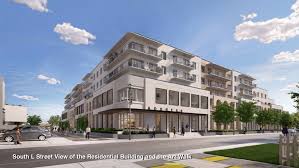

The Vanilla Ice Restaurant and Museum Will Not Save Downtown Lake Worth Beach
The concept proposed by Vanilla Ice (Robert Van Winkle) for downtown Lake Worth Beach is not just a restaurant, but a multi-faceted entertainment venue that includes a brewery, a pop-culture museum, a speakeasy, and a rooftop bar in a historic 1922 Masonic building.
Whether this single project will "save" downtown Lake Worth Beach is a complex question. Here's a breakdown of the potential impact:
Potential Positive Impact
Attraction/Tourism: A celebrity-associated, multi-level venue would likely draw significant attention, attracting both local visitors and tourists to the downtown area.
Economic Catalyst: Increased foot traffic can benefit surrounding businesses, restaurants, and shops, potentially encouraging new development and investment.
Historic Preservation: The project involves renovating and transforming a large, three-story, historic building, which is a key component of downtown revitalization.
Media Exposure: Given Vanilla Ice's background in reality TV (The Vanilla Ice Project), the renovation and opening could bring national media attention to Lake Worth Beach.
Variety of Offerings: The combination of a brewery, a museum, a speakeasy, and a rooftop bar provides multiple reasons for people to visit and stay for an extended period.
Context and Other Factors
It is generally recognized that downtown revitalization is a complex process that relies on multiple factors, not just one project. Other development in Lake Worth Beach includes:
Affordable Housing/Residential Projects: The Lake Worth Beach CRA has been involved in projects for affordable housing, which is crucial for a healthy, vibrant downtown community.
Other Downtown Initiatives: The city has been involved in other major development proposals, such as the proposed Weiner Museum of Decorative Arts (WMODA) and the Village Flats apartment project, which indicate a broader focus on downtown improvement.
In conclusion, while the Vanilla Ice project is a high-profile, substantial investment that could act as a major anchor and draw for downtown Lake Worth Beach, it is unlikely that one single development can "save" an entire downtown area. A successful revitalization is usually the result of a diverse range of public and private projects, including residential, commercial, and cultural, as well as addressing broader community needs. It will certainly contribute to the momentum, but it's part of a larger, ongoing effort.

